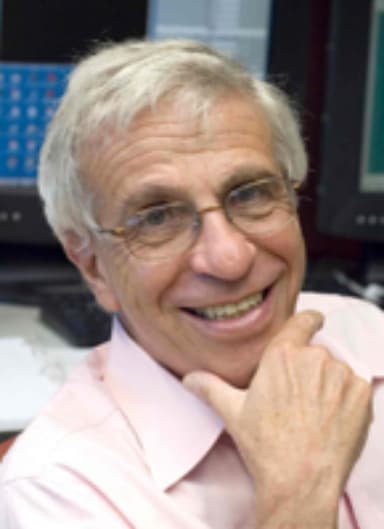Goldberg, McEuen, Shraiman, Xie Elected to the National Academy of Sciences

(Combined from Cornell University, Harvard University and University of California, Santa Barbara releases)
May 5, 2011
Members of four Kavli Insttutes have been elected to the National Academy of Sciences (NAS): Michael Goldberg, member of the Kavli Institute for Brain Science at Columbia University; Paul McEuen, Director of the Kavli Institute at Cornell for Nanoscale Science; Boris Shraiman, permanent member of the Kavli Institute for Theoretical Physics at UC, Santa Barbara; and X. Sunney Xie, Kavli Institute for Bionano Science & Technology at Harvard University.
Goldberg, McEuen, Shraiman, Xie are among the 72 new members and 18 foreign associate, receiving the honor in recognition of their distinguished and continuing achievements in original research.
Election to the NAS is considered one of the highest honors that can be accorded a U.S. scientist or engineer. Those elected today bring the total number of active members to 2113, and the number of foreign associates to 418. The new members will be inducted into the academy next April at the group's annual meeting in Washington, D.C.

Michael Goldberg
Michael Goldberg, director of the Mahoney-Keck Center for Brain and Behavior research and a member of The Kavli Institute for Brain Science, is a Professor of Brain & Behavior, Neuroscience, Neurology, Psychiatry and Opthalmology.
Goldberg studies the psychophysics and physiology of cognitive processes in monkeys. His current projects include elucidation of the cortical representation of oculomotor proprioception, using saccadic adaptation to understand the coordinate system of neurons in the lateral intraparietal area, the role of prestriate cortex in visual search, and the role of inhibition in the response of parietal neurons. Recent discoveries in the laboratory include the demonstration of a predictive relationship of parietal activity to both saccadic reaction time and visual attention. He also demonstrated that the lateral parietal area acts as a linear summing junction for at least three independent signals: a saccadic signal, undifferentiated visual signal, and a cognitive signal.

Paul McEuen
Paul McEuen, the Goldwin Smith Professor of Physics and director of the Kavli Institute at Cornell for Nanoscale Science and the Laboratory of Atomic and Solid State Physics (LASSP), studies the electrical and mechanical properties of carbon nanomaterials.
McEuen's group has conducted seminal studies of carbon nanotubes, quantum dots and single molecules. Recently he discovered that single photons can create multiple electron-hole pairs in carbon-nanotube photodiodes, suggesting a new strategy for enhancing efficiency in photovoltaic devices.
McEuen was awarded the Agilent Technologies Europhysics Prize in Condensed Matter Physics in 2001. He has served on the executive committee of the Center for Nanoscale Systems since 2002 and leads interdisciplinary research groups in the Cornell Center for Materials Research and the Center for Nanoscale Systems. He was appointed Goldwin Smith Professor of Physics in 2008 and director of the Kavli Institute and LASSP in 2010. (Cornell press release)

Boris Shraiman
Boris Shraiman is a theoretical physicist with a background in statistical physics. His current research interests are in morphogenesis, addressing the problem of "growth and form" in animal development; and statistical genetics, which aims to quantitatively describe evolutionary dynamics in populations.
Shraiman holds the Susan F. Gurley Chair in Theoretical Physics and Biology. He received his Ph.D. from Harvard and has worked on a range of physics problems from correlated electrons and superconductivity to pattern formation and turbulence. He began working on biology problems over 15 years ago, while at Bell Labs. In both morphogenesis and statistical genetics, his work focuses on the role of interactions. "In the case of morphogenesis, these are interactions between cells; in the case of population genetics, the interactions are between genetic polymorphisms," said Shraiman. "The study of ‘interactions,' both in developmental biology and in population genetics contexts, brings up unexpected but direct and useful connections with statistical physics. Discovering, exploring and exploiting these connections in order to develop new understanding of the biological problems is the main goal of my research." (UCSB press release)

X. Sunney Xie
X. Sunney Xie is the Mallinckrodt Professor of Chemistry and Chemical Biology at Harvard University. The Xie group at Harvard is working at the interface of several disciplines, striving to develop new physical and chemical tools to solve compelling biological problems.
Recent research in applied single-molecule experimentation of living cells has begun real-time imaging of gene expression, at both transcription and translation levels. To accomplish this, Xie's group has developed several strategies to achieve single-molecule sensitivity with high specificity, millisecond time resolution, and nanometer precision in living cells. Protein generation, one molecule at a time in E. coli cells, has been observed and studied including how a transcription factor binds to DNA and regulates gene expression. They found that a single-molecule event can be solely responsible for the life changing decision of a cell.
The Xie group continues to push for new imaging technologies. Leading rapid development of Coherent Anti-Stoke Raman Scattering (CARS) microscopy since 1999, and was recently superseded by Stimulated Raman Scattering microscopy (SRS). These are label-free imaging techniques based on vibrational spectroscopy, and are capable of real-time, noninvasive examination of living cells and organisms. Orders of magnitude more sensitive than conventional Raman microscopy, they allow mapping of 3D distributions of small molecules, such as metabolites and drugs, as well as tumor identification in tissues, which open many exciting new possibilities for biology and medicine. (Harvard press release)